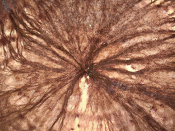Por Taban Baghfalaki (Bordeaux University, Bordeaux, France).
Dynamic event prediction, using joint modeling of survival time and longitudinal variables, is extremely useful in personalized medicine. However, estimating joint models that include multiple longitudinal markers remains a computational challenge due to the large number of random effects and parameters that need to be estimated. We propose a model-averaging strategy to combine predictions from several joint models for the event, including models with only one longitudinal marker or pairwise longitudinal markers. The prediction is computed as the weighted mean of the predictions from the one-marker or two-marker models, with the time-dependent weights estimated by minimizing the time-dependent Brier score. This method enables us to combine a large number of predictions issued from joint models to achieve a reliable and accurate individual prediction. The advantages and limitations of the proposed methods are highlighted by comparing them with the predictions from well-specified and misspecified all-marker joint models, as well as one-marker and two-marker joint models, using the available PBC2 dataset. The method is used to predict the risk of death in patients with primary biliary cirrhosis. The method is also used to analyze a French cohort study called the 3C data. In our study, seventeen longitudinal markers are being considered to predict the risk of death.
Short bio: Taban Baghfalaki holds a Ph.D. in Statistics from Shahid Beheshti University. She is a distinguished researcher specialized in biostatistics, statistical methods for health sciences, bioinformatics, and Bayesian statistics. Currently works as a Senior Researcher in Biostatistics at Bordeaux University, Bordeaux, France. Her extensive experience includes significant roles at various universities and research institutions, contributing to a broad spectrum of topics such as joint modeling of longitudinal and time-to-event data, Bayesian methods, and complex genetic data analysis. Her work has been cited over 500 times, and she boasts an h-index of 14. Her contributions to numerous research projects also underline her impact in these areas.
Transmissão por Zoom.





